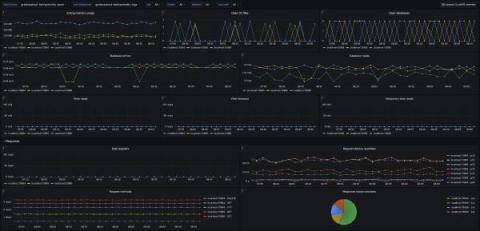Operations | Monitoring | ITSM | DevOps | Cloud
Databases
The latest News and Information on Databases and related technologies.
How to get the best of lexical and AI-powered search with Elastic's vector database
Maybe you came across the term “vector database” and are wondering whether it’s the new kid on the block of data retrieval systems. Maybe you are confused by conflicting claims about vector databases. The truth is, the approach used by vector databases has been around for a few years.
Getting Started with PostgreSQL: Setup Postgres Service
Graphite Metrics Delay: Why it Happens and What to Do
To understand why Graphite metrics delay occurs, we must first know what Graphite is. Graphite is an open-source tool used to track the performance of websites, applications, and network servers. It makes it simple to monitor, store, retrieve, and visualize numeric time-series data. While Graphite does make it easier to render graphs on-demand, the struggle of dealing with large amounts of data with minimum delay is real.
Database Sharding: What is it, and How it Works?
Today’s world runs on data. We are constantly improving our solutions thanks to the plethora of data available to us in the public domain. Our society has seen a behavioral change when it comes to formulating remedies. We are increasingly adopting data-driven decisions, and rightly so. Now, talking about this whole data logic, where do you think this enormous amount of data gets stored? Well, the answer is a database!
Enabling Vector Search in Aiven for PostgreSQL with pgvector
How to monitor an Apache CouchDB cluster with Grafana Cloud
We’re excited to introduce a dedicated Grafana Cloud integration for Apache CouchDB, a NoSQL document database that stores data in a JSON-based document format. Known for its scalability, availability, and easy replication of data across multiple servers, Apache CouchDB comes with a whole host of features designed to make it easy to run resilient distributed systems, with built-in bi-direcitonal replication allowing for simple replication across multiple servers and data centers.
Top 10 Contact Database Providers for Your Sales and Marketing Needs
Enterprise businesses that adopt Database DevOps save an average of $4.3M per year
The Carbon Daemons: Graphite monitoring
Graphite is a powerful open-source time series database used for storing, retrieving, and visualizing changing numeric data points over time. With its robust monitoring system, Graphite can efficiently handle large data loads without compromising performance. In this article, we delve into the basics of Graphite, focusing on its primary component, Carbon.











